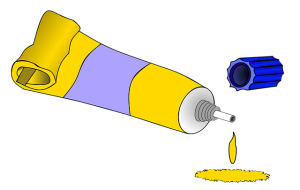
When installing gaskets, you may want to use gasket sealant. It will amplify the gaskets’ properties so that leaks are less likely to occur.
Whether a gasket is made of silicone, fluorosilicone or any other elastomeric material, it will stretch under pressure. Gaskets made of elastomeric materials will then reverse back to their original shape and size when the pressure is released. Gaskets can fail, however. It only takes a small hairline breach in a gasket to allow the pressurized gas or liquid to leak out. For better protection against leaks such as this, look no further than gasket adhesive.
What Is Gasket Adhesive?
Gasket adhesive is a type of heavy-duty adhesive that’s designed for use on gaskets. It’s essentially a glue-like adhesive. You can apply gasket adhesive directly to a gasket when installing it. As the gasket adhesive cures, it will reinforce the gasket. The gasket will then offer a higher level of protection against leaks.
How Gasket Adhesive Works
Gasket adhesive works by joining the surface of the gasket with the mating surface with which it’s used. Gaskets are installed around mating surfaces. On engines, for instance, gaskets are often placed on the mating surface between the engine block and cylinder head. Gasket adhesive allows gaskets to “stick” to the mating surface. At the same time, it will help to fill the space between the gasket and the mating surface.
There are different types of gasket adhesive. Some of them are designed to cure instantly, whereas others may take 24 to 48 hours to cure. Gasket adhesive will only offer additional protection against leaks once it has cured.
Why Use Gasket Adhesive
Not all gaskets require the use of gasket adhesive. Many of them, in fact, will protect against leaks on their own and without any adhesive. But you may still want to use this product when installing gaskets.
With gasket adhesive, you can rest assured knowing your gaskets are fully protected against leaks. The gaskets alone may prevent pressurized gas or liquid from leaking. But with gasket adhesive, there’s a second line of defense. If a gasket fails or succumbs to extreme stress, the adhesive may hold back the pressurized gas or liquid.
Gasket adhesive is easy to use. You don’t need any special tools or equipment. Like most adhesives, it comes in a squeezable tube. After cleaning the gasket, squeeze the tube to release the adhesive. You can refer to the instructions on the packaging for more information on how much adhesive to use.



